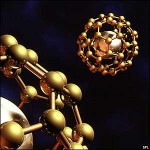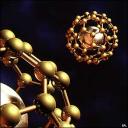Nanotechnology offers many benefits, but what about the possible downsides? When it comes to emerging technology, our ability to predict the outcomes of its application is often limited
It is impossible to deny the potential and excitement that nanoscale technology offers for the future. Whether it is in aerospace materials, medical treatments or improving computer devices, nanotechnology cannot be ignored.
But with any emerging technology comes potential risk. How much do we really know about the impacts on society and on health of the tiny nanoscale particles that are being churned for commercial and scientific purposes? Are nanoparticles released as we use those products causing harmful effects to the environment? The application of nanotechnology seems limitless, but where could these powerful ideas lead?
The classic worry about nanotechnology is the “grey goo” nightmare, a hypothetical end-of-the-world scenario involving molecular nanotechnology. Imagine, some time in the far future, that an oil tanker has run aground and is spilling its billions of gallons of cargo into a pristine natural habitat. A flotilla of tiny oil-munching nanorobots is deployed to break down hydrocarbons, rendering the spill harmless. In this science fiction scenario, the nanorobots have the capability of self-replicating, making hundreds of copies in minutes. And, instead of eating only hydrocarbons, the robots begin to eat everything around them. It doesn’t take long before everything on Earth is consumed by the proliferating mass of robots. Life, as we know it, would be gone.
The idea was first raised by Eric Drexler in his 1986 book, Engines of Creation. For those worried about nanotechnology, grey goo is a good reason to pause any progress until we can confirm we completely understand the process and its implications.
Fortunately, Drexler’s scenario is highly improbable – fast-replicating nanorobots would need so much energy and produce so much heat that they would become easily detectable to policing authorities who could stamp out the threat. In 2004, Drexler himself made public attempts to play down his more apocalyptic warnings.
But no technology is entirely safe, and the scientists working in any new field have a burden of responsibility as they step into the unknown.
– More… ➡
 – I’ve been concerned about nanotechnology for sometime (
– I’ve been concerned about nanotechnology for sometime ( 